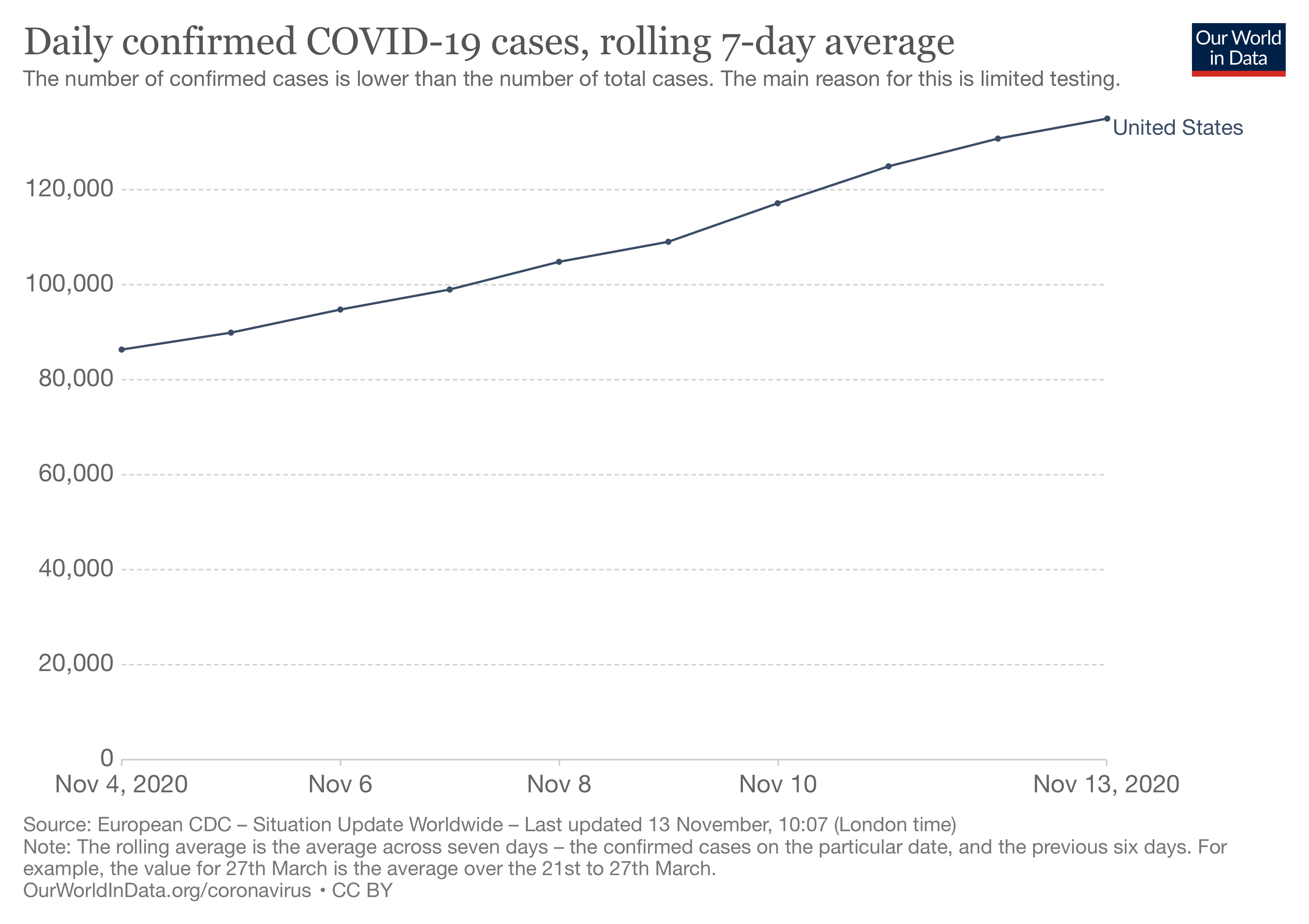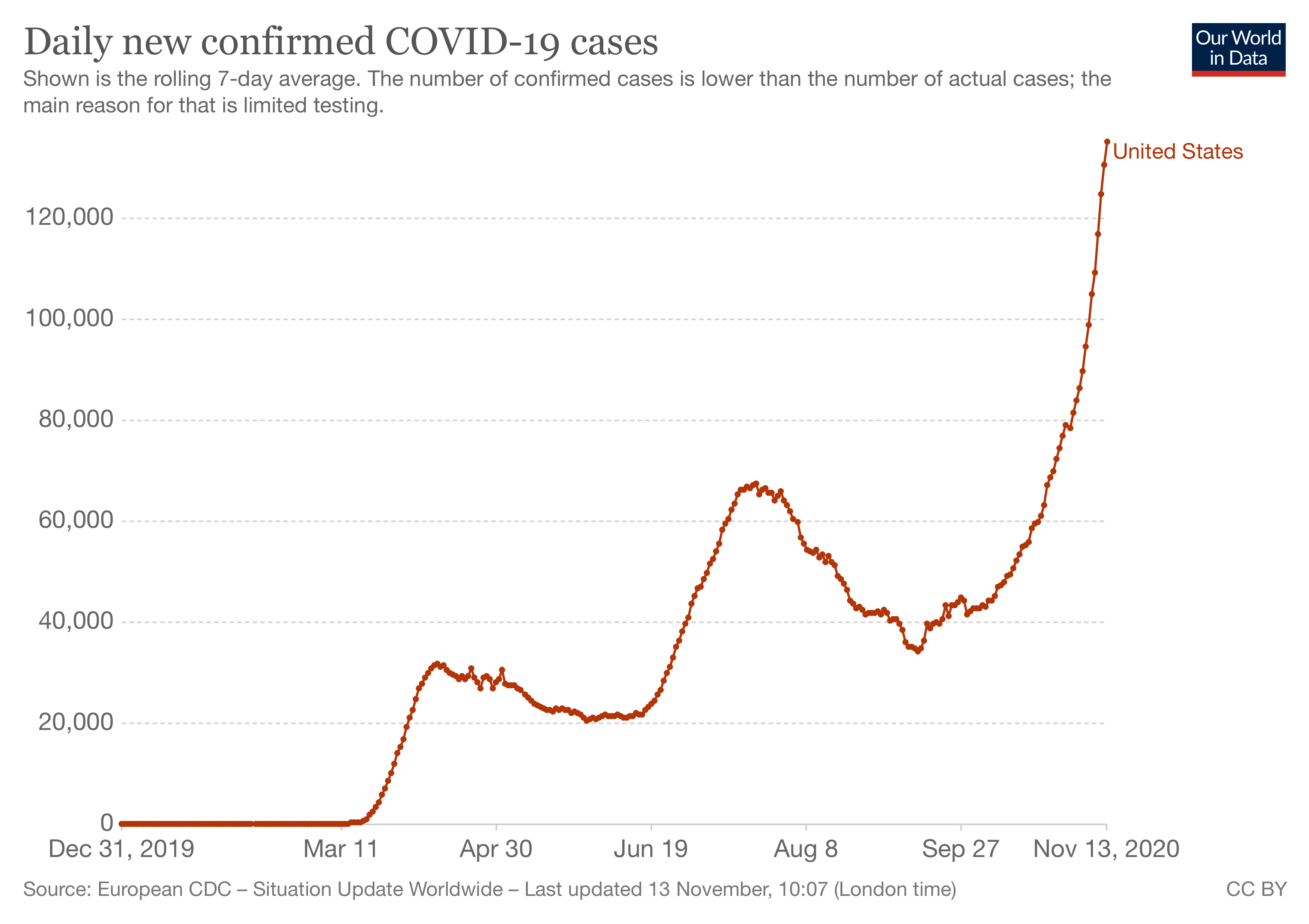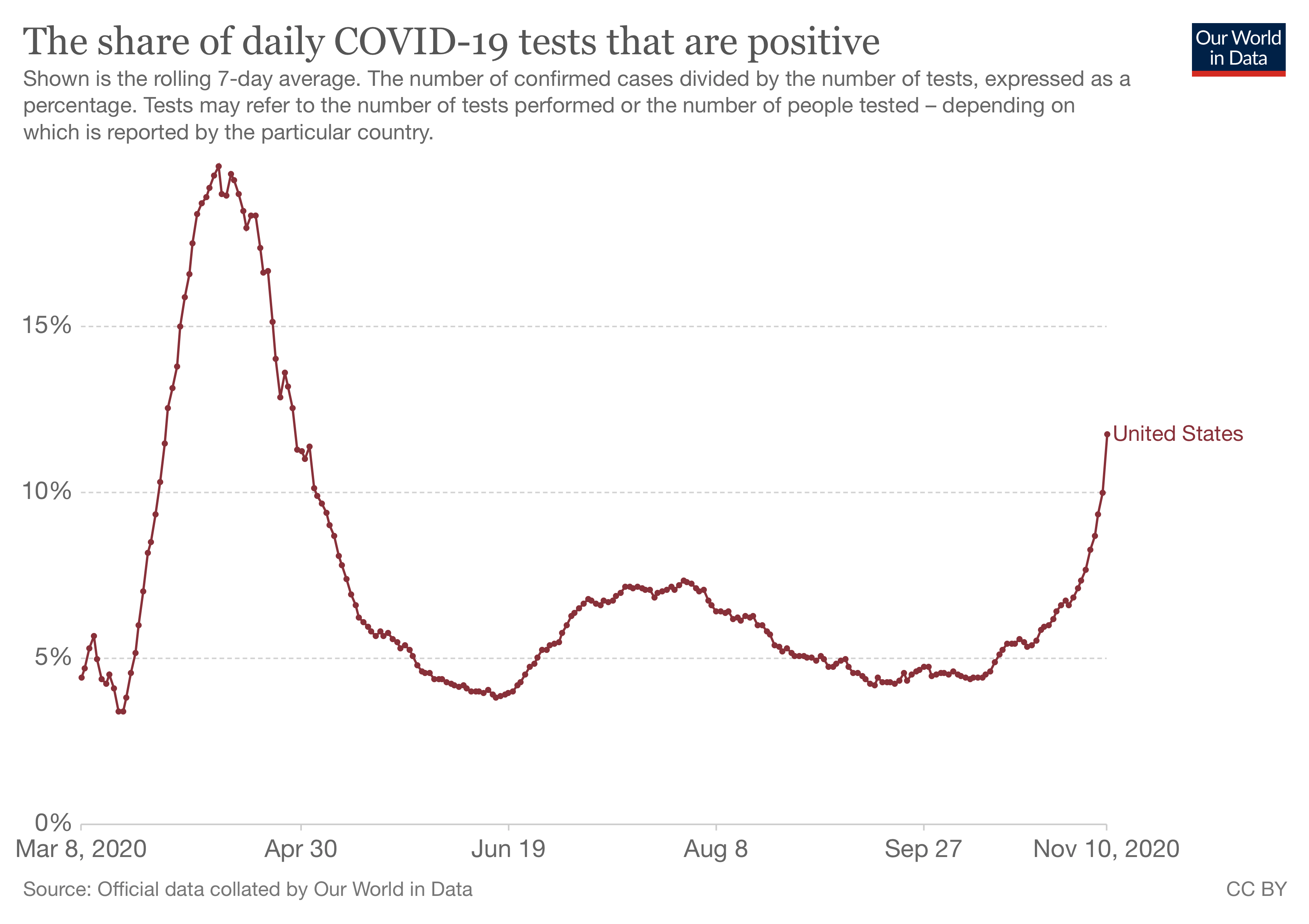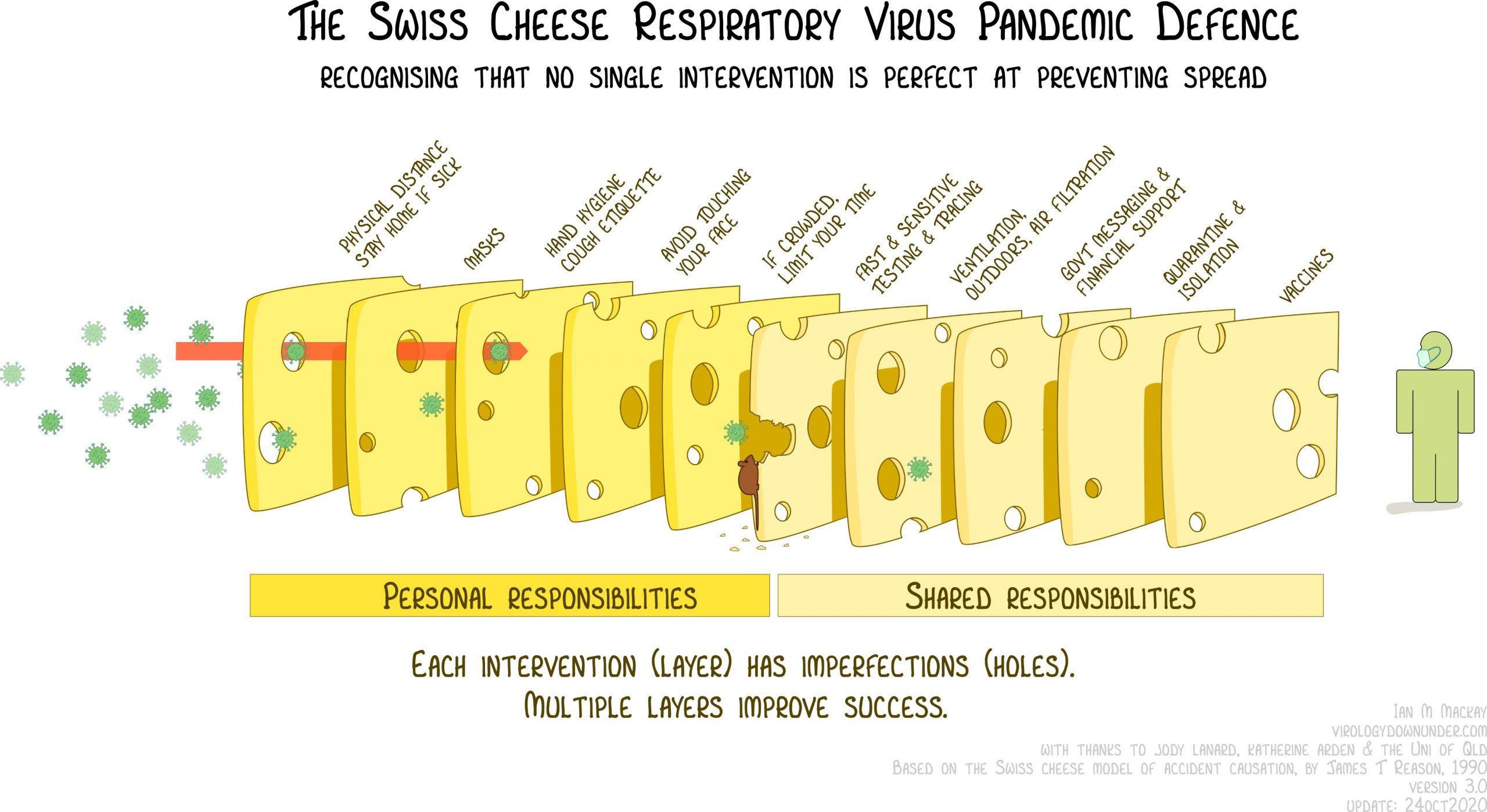

FULL CLAIM: “There were 144,305 newly reported COVID-19 cases in the United States today. This beats the previous record of 133,819 cases reported on Monday, November 9. This is the 8th day in a row with over 100,000 cases reported.”
REVIEW
Scientists and news outlets sounded the alarm on the rising number of COVID-19 cases, hospitalizations, and deaths in the U.S in the beginning of November 2020 (see here, here, and here). A 12 November 2020 tweet by NBC News journalist Ali Velshi, went viral on social media after a screenshot of the tweet was shared on Instagram, which has received more than 57,000 interactions on Instagram according to social media analytics tool CrowdTangle. The tweet reads, “There were 144,305 newly reported COVID-19 cases in the United States today. This beats the previous record of 133,819 cases reported on Monday, November 9. This is the 8th day in a row with over 100,000 cases reported.”
Given the virality of the tweet, Health Feedback decided to verify the accuracy of these figures. The source of the numbers were not indicated in the tweet, however a quick search on Google indicates that the figures exactly correspond to those in NBC News’ 12 November report on the COVID-19 surge in the U.S. Similar figures can also be seen in the tweet below:
US coronavirus cases for each day in November:
Nov. 1: 76,771
Nov. 2: 86,589
Nov. 3: 91,910
Nov. 4: 104,296
Nov. 5: 121,289
Nov. 6: 126,731
Nov. 7: 125,100
Nov. 8: 109,177
Nov. 9: 133,819
Nov. 10: 131,990
Nov. 11: 148,302— NBC News (@NBCNews) November 12, 2020
This page suggests that NBC News relies on Johns Hopkins University’s Coronavirus Resource Center for these statistics, which in turn aggregates data from various sources, including health authorities and public health agencies at the national and state level, although it does not currently rely on the U.S. Centers for Disease Control and Prevention (CDC) as a source of data.
The claim that 12 November 2020 “is the 8th day in a row with over 100,000 cases reported” is accurate, according to data provided by the COVID Tracking Project, “a volunteer organization launched from The Atlantic and dedicated to collecting and publishing the data required to understand the COVID-19 outbreak in the United States,” as Figure 1 shows.
![]()
Figure 1. The daily number of new confirmed COVID-19 cases in the U.S. (rolling 7-day average), between 1 March and 12 November 2020. On 4 November 2020, the number of cases crossed the 100,000 mark, with 103,067 reported cases. Data and graph by COVID Tracking Project, retrieved on 13 November 2020.

Table 1. The daily number of new cases recorded by the U.S. CDC, updated on 12 November 2020. Note the CDC’s caveats regarding this data: “The numbers are confirmed and probable COVID-19 cases as reported by U.S. states, U.S. territories, New York City, and the District of Columbia from the previous day. Case numbers reported on other websites may differ from what is posted on CDC’s website because CDC’s overall case numbers are validated through a confirmation process with each jurisdiction. Differences between reporting jurisdictions and CDC’s website may occur due to the timing of reporting and website updates. The process used for finding and confirming cases displayed by other sites may differ.”
However, the CDC data at the moment does not fully support this claim, as cases on 7 November 2020 do not exceed 100,000 (Table 1). The Coronavirus Database by Our World in Data also does not show that more than 100,000 cases were reported in the U.S. for consecutive eight days (Figure 2). Based on data from the European CDC, Figure 2 shows that the 100,000 mark was broken only after 7 November 2020, like the U.S. CDC’s data.

Figure 2. The daily number of new confirmed COVID-19 cases in the U.S. (rolling 7-day average), between 4 and 13 November 2020. Data and graph by Our World in Data, retrieved on 13 November 2020.
Overall, the claim is accurate, given that the figures are based on a reliable source, although the differences between databases, for instance in terms of data sources, highlight the need to use the same databases when making comparisons.
The claim is also correct in calling the present numbers of COVID-19 cases as record numbers. As can be seen in Figures 1 and 3, the U.S. is indeed currently seeing the highest number of new COVID-19 cases since the pandemic started. This is not simply the result of more tests being conducted, as the increase in cases is accompanied by an increase in positivity rate (Figure 4), which is the proportion of positive tests among all tests conducted, indicating that there are more infected people, at least within the tested population.

Figure 3. The daily number of new confirmed COVID-19 cases in the U.S. (rolling 7-day average), since the start of the pandemic. Data and graph by Our World in Data, retrieved on 13 November 2020.

Figure 4. The positivity rate for COVID-19 tests in the U.S. (rolling 7-day average), from 8 March to 10 November 2020. Data and graph by Our World in Data.
COVID-19 hospitalizations are also now at an all-time high (Figure 5), as reported by The Atlantic, Buzzfeed News, Associated Press, and Fox News. Some hospitals now lack sufficient resources to care for all patients, and this 10 November 2020 article by The Atlantic reported that the entire state of Iowa ran out of staffed beds.
![]()
Figure 5. The number of current COVID-19 hospitalizations in the U.S. Data and graph by COVID Tracking Project, retrieved on 13 November 2020.
The number of COVID-19 cases and hospitalization have only continued to rise throughout the month of November. On 28 November 2020, the New York Times reported that the U.S. saw more than four million cases in November alone, breaking the record set in October (1.9 million), accompanied by a record number of more than 93,000 hospitalizations, according to the COVID Tracking Project. On 1 December 2020, ABC News reported that the U.S. recorded another 1 million cases in the last week of November alone.
In order to reduce the spread of COVID-19, the U.S. CDC urges all Americans to follow public health measures, such as wearing a mask, physical distancing, and maintaining good hand hygiene:
#COVID19 cases continue to rise with 94% of U.S. jurisdictions experiencing increases. On 11/11, CDC reported 143,408 new cases, the highest for a single day. Help slow the spread. Wear a mask, wash your hands, and stay 6 feet from others. Learn more: https://t.co/1nMYQAjpSq pic.twitter.com/HxQSVTuk0F
— CDC (@CDCgov) November 12, 2020

This review was updated to include an ABC News report that the U.S. recorded about 1 million more cases in the last week of November 2020 alone.
UPDATE (30 Nov. 2020):
This review was updated to include the number of COVID-19 cases and hospitalizations at the end of November 2020 as reported by the New York Times and the COVID Tracking Project.


